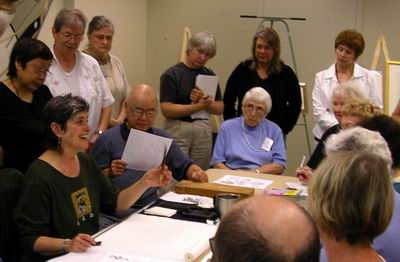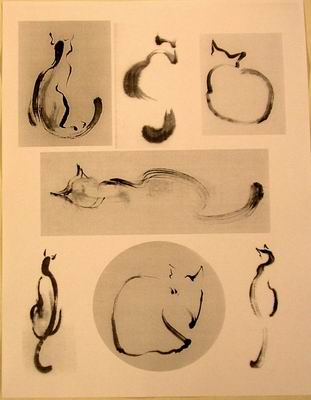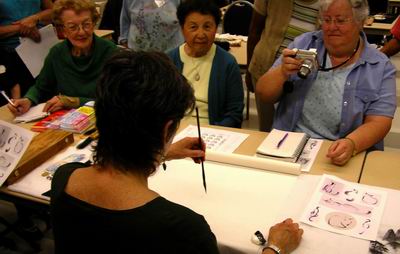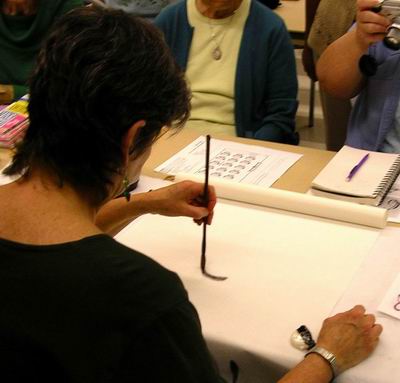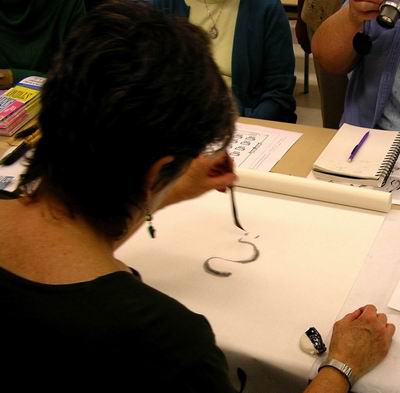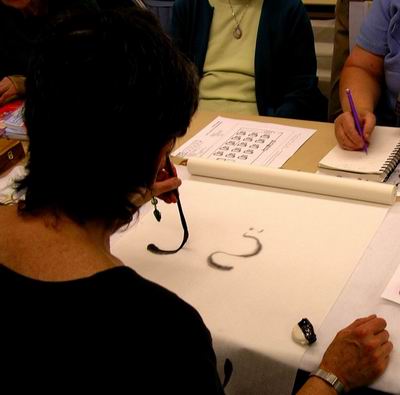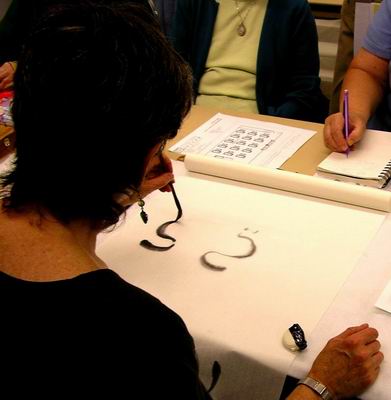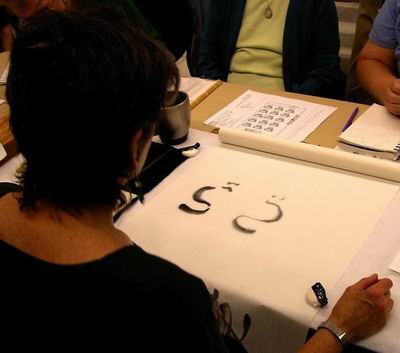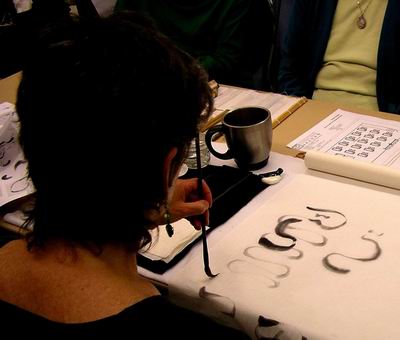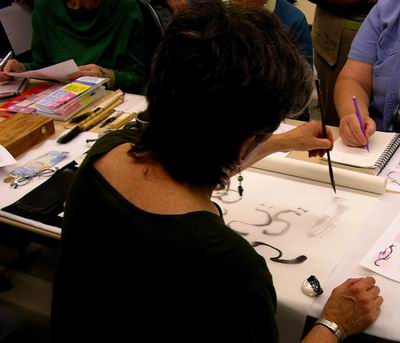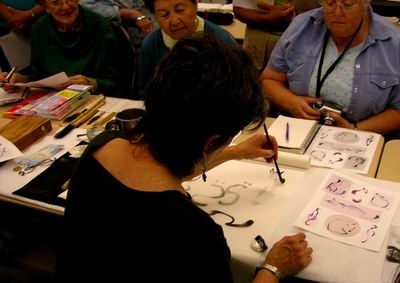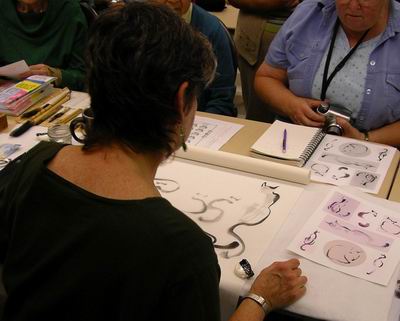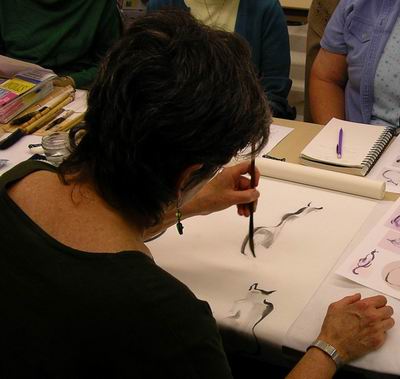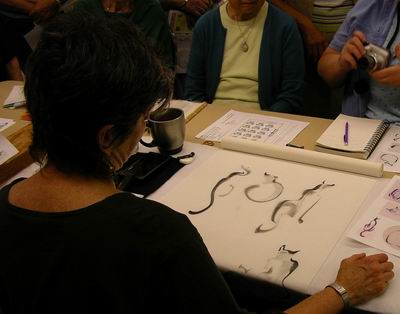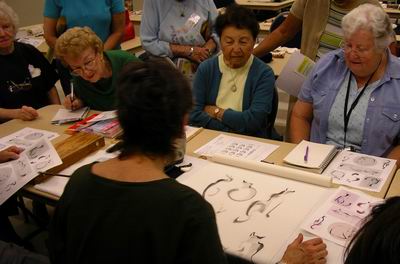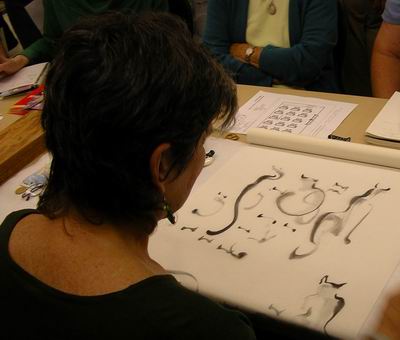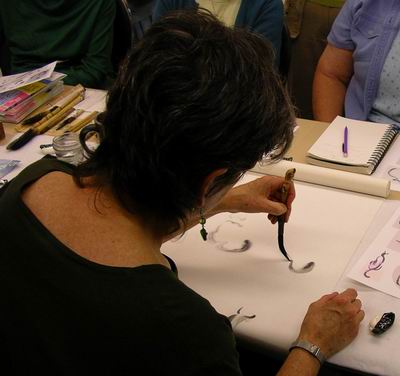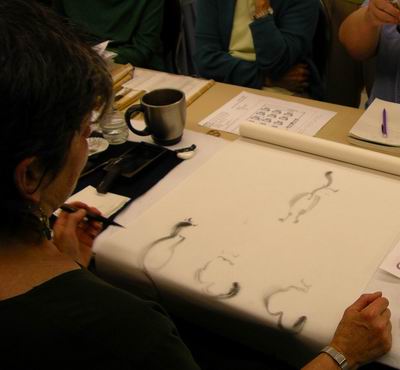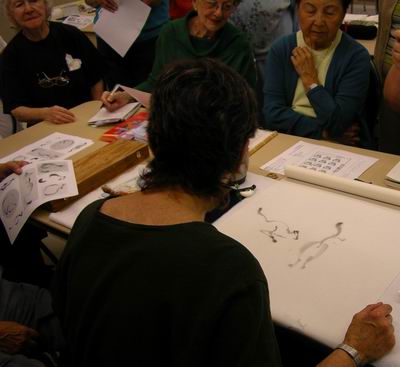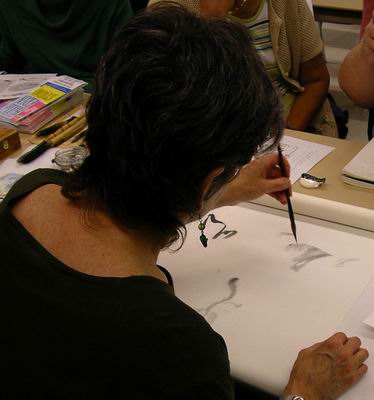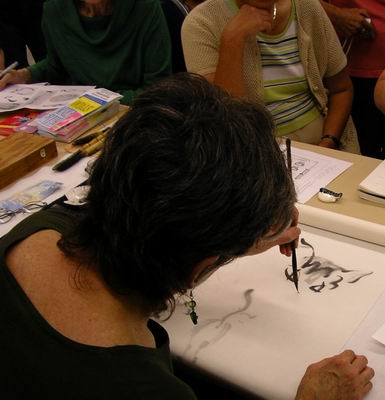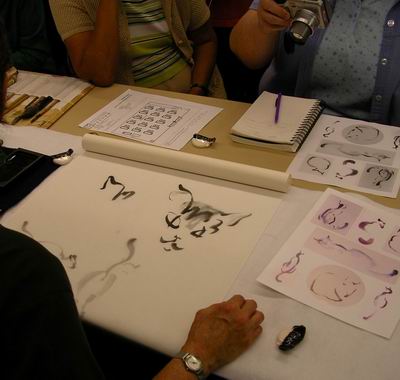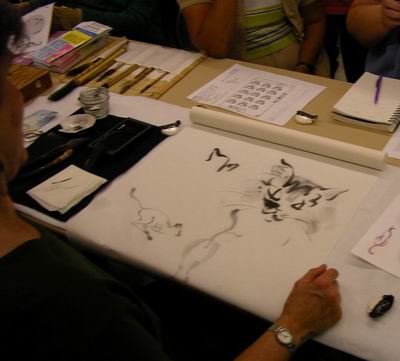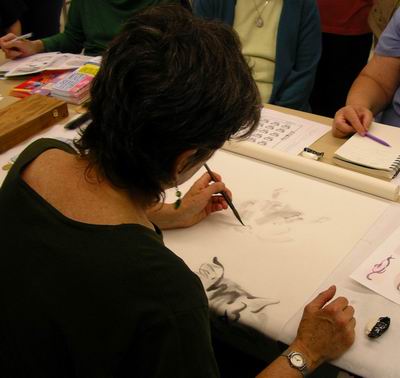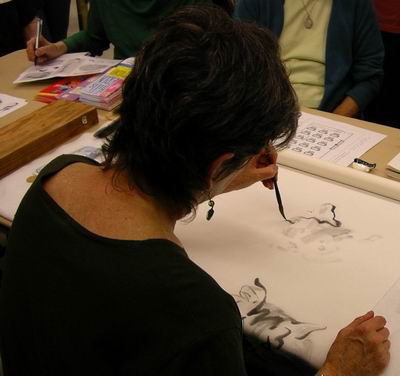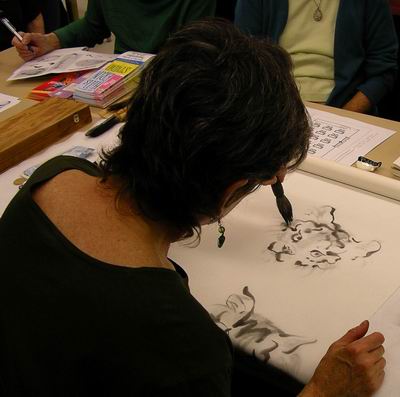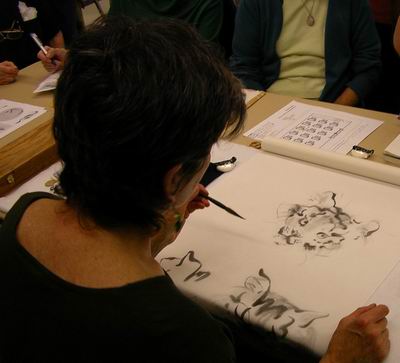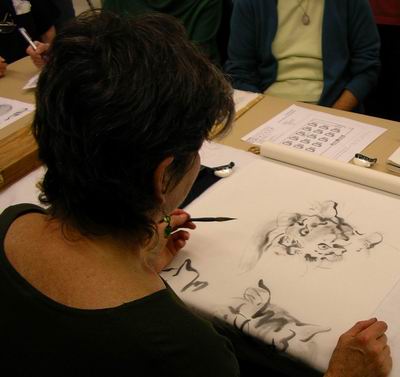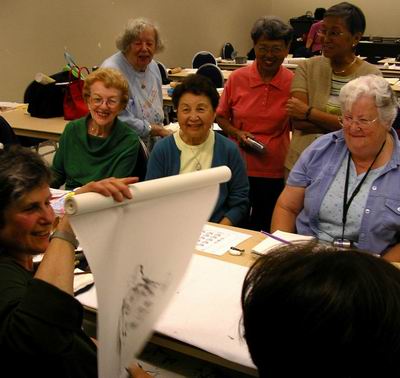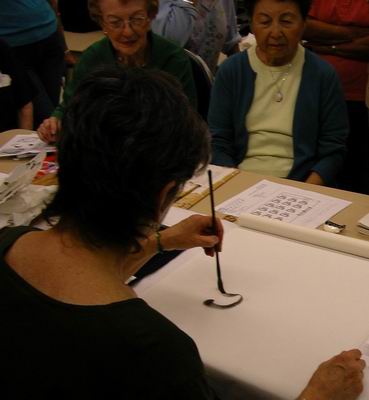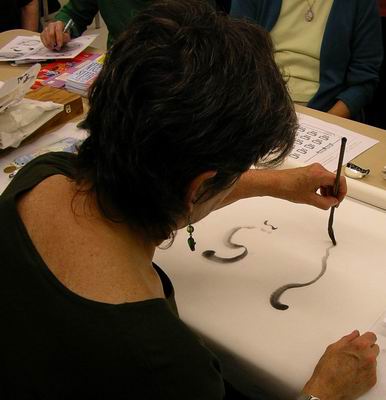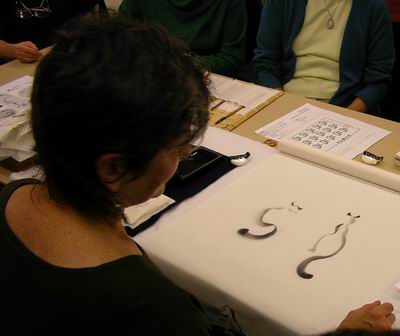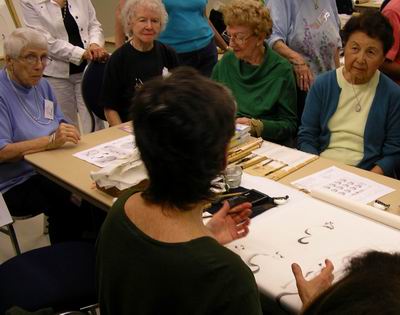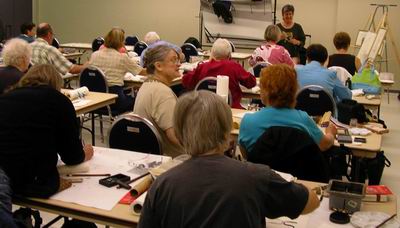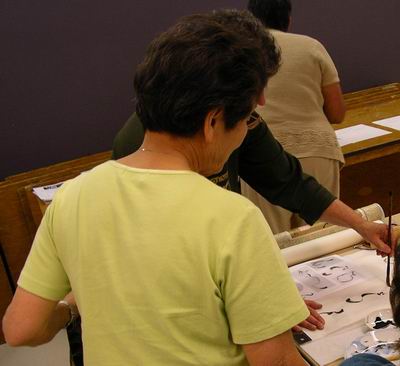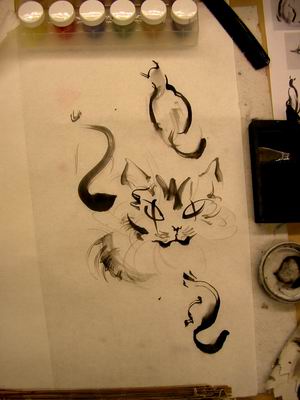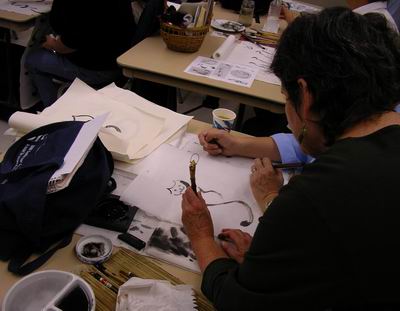Cats with Roslyn Levin - September 9th, 2006
Roslyn Levin's approach to painting cats is similar to her approach on painting other subjects: study cats continually, distill cats to their visual essence and use the brush to bring out those cat-like qualities in a simple, direct and often bold manner. Roslyn began her workshop with a lively discussion on our feline friends.
Roslyn brought a handout for the workshop participants that showed the outline of cats from the back in various standing, sitting and lying positions. As in Roslyn's style, the cats consisted of a few brush strokes that captured the essence of cat characteristics. The class would be focused on this angle of the cat. In her workshop, Roslyn worked completely with sumi-e ink.
Collecting her thoughts, Roslyn paused as she began her first cat. Roslyn believes in correct posture and breathing while painting. Painting is an extension of her whole body movement.
In the first brush stroke, Roslyn used pressure to get the type of effect she wanted on the rice paper.
In one measured stroke, the outline of the cat and its ears was done.
Roslyn advised the workshop participants to consider drawing the same image in the opposite view. For example, this second cat started with the tail to the left and then added the outline of the body to the left in a mirror image of the cat on the right.
Again Roslyn used pressure to get the desired effect in the painting.
Then Roslyn paused and looked at the completed cats. Roslyn periodically stopped and assessed her work, which is how Roslyn gets a sense of the direction the art is going and the merits of each piece. Roslyn can be surprisingly objective in analyzing her work.
At this point, a few practice stokes were drawn to emphasize the need for pressure and total body movement when painting.
In addition to starting with lines, Roslyn sometimes begins with a gray, almost abstract ink wash and then adds lines to create definition.
Ears emerged from this gray abstraction.
Then the back and tail were added with the original gray ink forming the body.
Roslyn continued with another cat created using gray tones for the body with blacker ink to highlight the back and ears.
Several other cats were created in various positions using this technique.
This array of cats led to one of Roslyn's typical engaging discussions with the workshop participants on techniques and paint brushes and rice paper. Roslyn, always challenging our accepted practices, suggested we consider painting on the smooth side of the rice paper to get a better continuous, flowing line.
Here's a Roslyn Levin tip on creating cat ears. Remember how you drew the joints in bamboo paintings? Cat ears are similar.
Roslyn then picked up one of her favourite brushes for drawing cats and other creatures.
Some seated cats and a standing cat with a distinctive tail emerged from this brush.
Roslyn then created a running cat.
To draw the head of a cat Roslyn began with a gray sketch.
Then the markings of the cat were added in striking black stokes.
The eyes and mouth came with similar bold strokes.
Finally, a wider brush with gray ink added the whiskers and fur.
Cats come from a large family. Roslyn turned to a tiger next, beginning its head with a gray outline.
Then the markings of the tiger were added to it.
The eyes and pupils are different on a tiger. Though tigers are painted as fierce creatures by convention, Roslyn's tiger showed an introspective quality. Roslyn's paintings attract the viewer because she paints the subject in way not usually shown, revealing aspects of the subject that are hidden in the conventional approach. This ability to bring out characteristics not usually shown makes her work fascinating to the viewer.
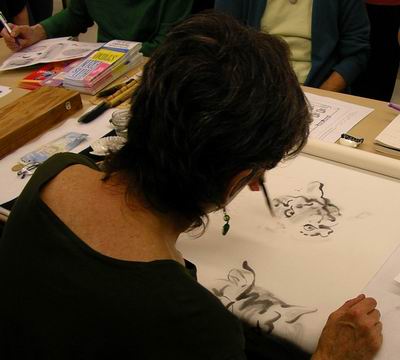
The head was then filled in with tiger markings.
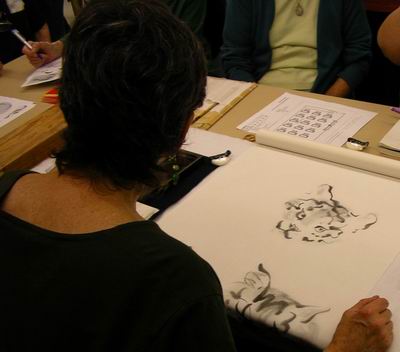
A large brush added the fur and whiskers.
Then a few more details with a smaller brush.
A neck extended the painting.
Roslyn showed the painting to the workshop participants, many of whom were cat fanciers.
Time was flying by at this point of the workshop. Roslyn reminded participants that part of workshop consisted of drawing cats themselves. Roslyn concluded her demonstration by returning to the basic cats that she wanted us to work on in this workshop. Roslyn reminded us to use simple strokes with pressure on the brush to get the effect.
Roslyn again advised us to try two cats as shown below to learn how to create two different views of a cat from behind.
These two cats were the essence of what Roslyn asked us to work on ourselves in the workshop.
A few words of advice and encouragement were offered by Roslyn before we headed to our desks to try painting our own cats.
Workshop participants dove into the cat creation exercise.
Roslyn provided some one-on-one support to each of us suggesting where we might best focus our efforts to get the desired effect.
Some simple suggestions on this work-in-progress illustrated how a few well-placed strokes could make our cats stand out on the rice paper.
In this session with a participant, Roslyn returned to emphasizing pressure on the brush to get the continuous but dramatic line that creates the outline of the cat.
For more information on Roslyn Levin, see the links section.
